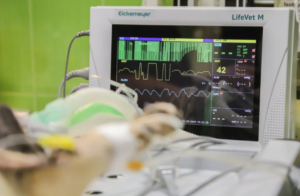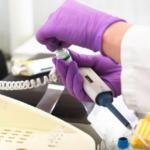Technology is a big part of the healthcare industry because it is the driving force of any progress that can change and improve countless lives. The pace of today’s creations is increasing, and many must agree that technology helps us to practice current treatments and new medical treatments that allow us to use new tools, save lives, and gather information. However, many doctors and other healthcare providers don’t have enough time to adapt this advanced technology to improve their skills, quality, and knowledge. You can read about it at https://taz.de/Studie-zu-medizinischen-Leitlinien/!5074582/. Technology is changing healthcare and why we need to embrace it when sharing information or helping with high-risk surgeries.
The Advance of Virtual Healthcare
Virtual health care can also be called telemedicine and tele-health because it allows patients to share important information with their doctor and monitor their health at home, for example, with a stethoscope. This type of medical care also allows doctors to discuss their understanding of video conferencing or cellular applications easily. Years ago, this was unimaginable, but today you have the opportunity to contact a doctor in another part of the world and learn about his revolutionary therapies and medicines. This healthcare can save the U.S. healthcare system billions of dollars a year; however, the loss of private contact with the doctor, and comparison visits could also worsen the quality of care.
The Use of Artificial Intelligence in the Healthcare Industry
 A.I. may not be a high priority, and implementation may be slow, mainly because of cost. Only 12% of wellness programs said they have introduced A.I. for cancer treatment or are more likely to be implemented in 2018. In general, it is emphasized that radiologists are more likely to be replaced by A.I. equipment. Still, A.I. could improve the doctor-patient relationship by freeing up time that is not substantially available to doctors to spend more time with victims.
A.I. may not be a high priority, and implementation may be slow, mainly because of cost. Only 12% of wellness programs said they have introduced A.I. for cancer treatment or are more likely to be implemented in 2018. In general, it is emphasized that radiologists are more likely to be replaced by A.I. equipment. Still, A.I. could improve the doctor-patient relationship by freeing up time that is not substantially available to doctors to spend more time with victims.
The Application of 3D Printing to the Healthcare Industry
3D printing is not new, as it has been used for decades, but it has come a long way since it was made. Now that printing has faster prototypes that can provide customized prosthetics. What makes 3D printing amazing is that it also recognizes organ transplants and tissue fixations because it can create realistic skin. 3D replicas and anatomical variations allow doctors to scan data to diagnose disorders, clarify them, and schedule surgical procedures. 3D printing still has a long way to go, but models are more complex and realistic than ever before.
The Help of Robot-Assisted Surgery
Robot-assisted surgery is a type of surgical procedure performed by autonomous systems. It was created primarily to help doctors perform minimally invasive procedures and to improve surgeons’ skills. A physician would normally use a so-called telemanipulator or possibly a computerized control capable of transmitting weapons. For example, laparoscopic procedures contain small incisions that can be made in this way only because they do not require blood transfusions. The most recent invention was the first robotic operation at the femoral vasculature performed in Slovenia.
The Improvement of Nanomedicine
Nanomedicine is another developing discipline in the medical system. It’s used for diagnosis, treatment, and protection against various diseases. This type of medicine uses nanoscale materials such as biocompatible nanoparticles and nanorobots. Furthermore, nanomedicine is applied for imaging, sensing, and blood purification purposes. However, the downside of this technology is that it’s worth over $350 billion by 2025.
Conclusion
Finally, let’s talk about five innovative technological assets that will change the future and the present of your health in general. Digital healthcare is changing the way we manage our health, but it is also eliminating the familiarity of face-to-face meetings with doctors: robotic surgery and A.I are promoting surgeons and other healthcare workers’ capabilities while nanomedicine is creating an easier way for imaging and treating various diseases. However, these technologies are still in progress; hence many people are skeptical about their involvement in health care, but they are making rapid progress and can contribute in the healthcare industry.
